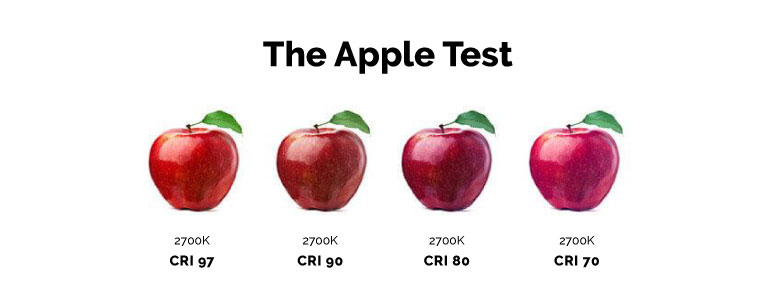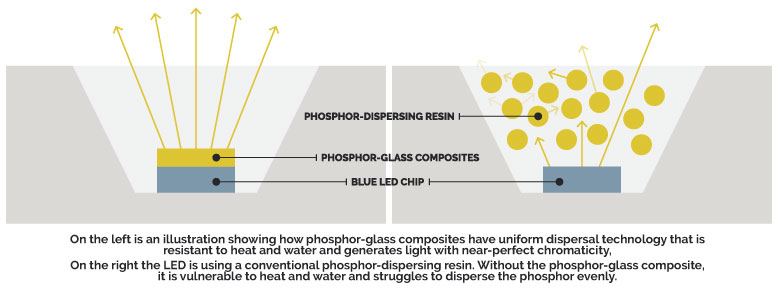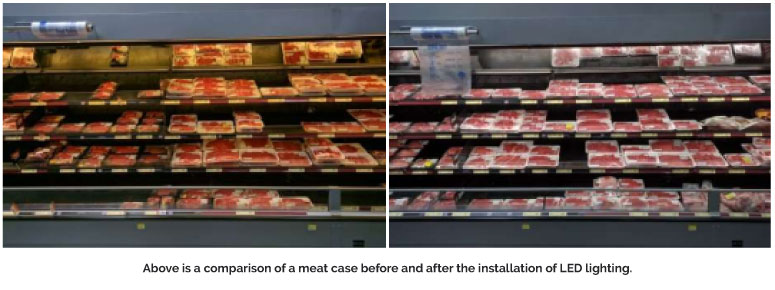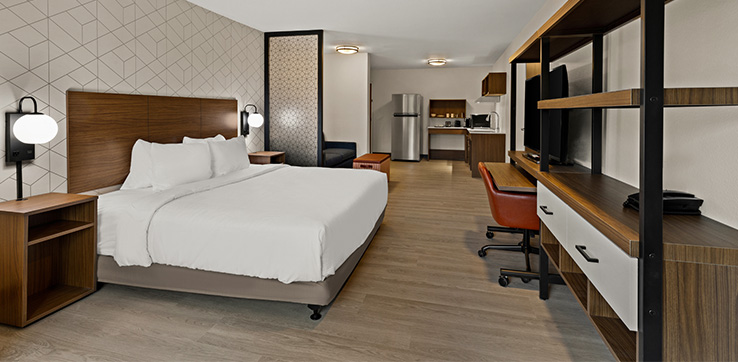In recent years, we have seen a growing trend of retailers favoring light-emitting diode (LED) lighting over the traditional light sources, especially with big-box retail brands. Based on our project experience, LED lighting provides several benefits compared to the fluorescent lighting options that have historically been available. Due to the proven benefits, we have started to recommend the use of LED sources in our projects especially with clients in the food retail industry. Here’s a few reasons why:

The power to change color
The color rendering index (CRI) of most LED sources on the market today is extremely high, which has direct benefits to the sale of products, especially in the produce area.
Color tone under the sun has been held as the perfect color tone standard for products and goods for years and, as LEDs become a more stable and reliable light source on the market, they offer a CRI closer to sunlight than most other light sources. Since LEDs are becoming more affordable, it allows retailers the opportunity to reach that hypothetical perfect state without the cost and maintenance of a skylight.
LED light sources also offer the power of color manipulation for product priority lists. If apples, lipstick or that little killer red dress occupy the front window of a store, an LED is going to be an important design decision to increase the quality of red shown to the customer. Evaluating the R9 numbers of an LED source will provide the highest rendering possible of this vibrant color.

An LED light source is composed of diodes (or chips) covered by phosphor and then by a lens. There are a million possibilities to the outcome based on the thousands of chips available and multitude of phosphors available. The phosphors can also be directly applied to the chip (think of a sandwich where the bread would be the chip on one side and the glass on the other with the phosphor as the contents) or can be integrated into the lens (think of looking through rose colored glasses). Since the LED’s chips and phosphors can be targeted during the manufacturing process it allows the color temperature, CRI and R9, to be rendered to the specific color needs of the consumer.
In an industry where the full range of RGB matters, like gem sales or paint swatches or even displaying art, LED light sources are a great option since they provide not only a dimmable light source but also because the light color can be adjusted for a specific retailers’ need. No matter what product is being sold, the color and light that it’s seen in by the customers can make a difference.
Less food waste is ideal
Food waste continues to be an area of focus among retailers and color is just as important here. LEDs are trending in food retail and are preferred over traditional light sources, especially in meat cases, because the LED does not act as a heat source. This helps to preserve the red color of meat, which offers a longer purchasing shelf life to the retailer. Meat has one of the highest percentages of food waste in the industry due to the color change from red to brown, a change which impacts consumers’ perception of freshness. There is also a direct correlation between the speed in which a pound of red ground beef meat turns to the undesirable brown/grey based on the heat provided merely from a shelf light source. Therefore, designing with LEDs helps achieve the true food “sell buy” shelf life of a product, instead of a freshness appearance shelf life that was reduced due to the lighting.

Energy efficiency is key
After the initial launch of the LED market, there was an exponential explosion of light sources available with unvalidated claims on their specification sheets, which then caused many owners to question the warranties and promises offered by the LEDs. This hesitancy led to the rise of the fluorescent retrofit options. However, after the LED market stabilized and the products were adequately and comprehensively tested, therefore selecting the most efficient option has become much easier. We’re especially seeing a move to LEDs in the back of the house refrigerated coolers and freezers because they do not have the warmup time of fluorescent light sources or the temperature restrictions. Many retailers also appreciate the lack of mercury in LEDs over fluorescents.
Some retailers are utilizing the quick start times of LEDs in cold temperatures to gather even more energy savings by moving to occupancy sensor LEDs within salesfloor aisles. This move allows for two-pronged savings to the client: the energy savings from the efficient lighting and the benefit of increased sales from well-lit products. Those energy savings also translate to energy savings from a heating and cooling standpoint, because no longer will a retailer have traditional light sources putting off heat into the space.
Between the cost savings retailers realize from the decrease in food waste to the subsequent energy savings during building maintenance, we have no doubt the trend of LED lighting will continue to expand. As light sources continue to offer new options to a client’s ability to market a product, the future of lighting technology and design seems to be limited only by one’s imagination and electrician. As we begin to see our clients make the move to LEDs in a variety of projects, we as designers are excited to see what the future will bring as we continue to monitor future lighting trends and prepare to offer versatile and flexible light sources in the coming years.



